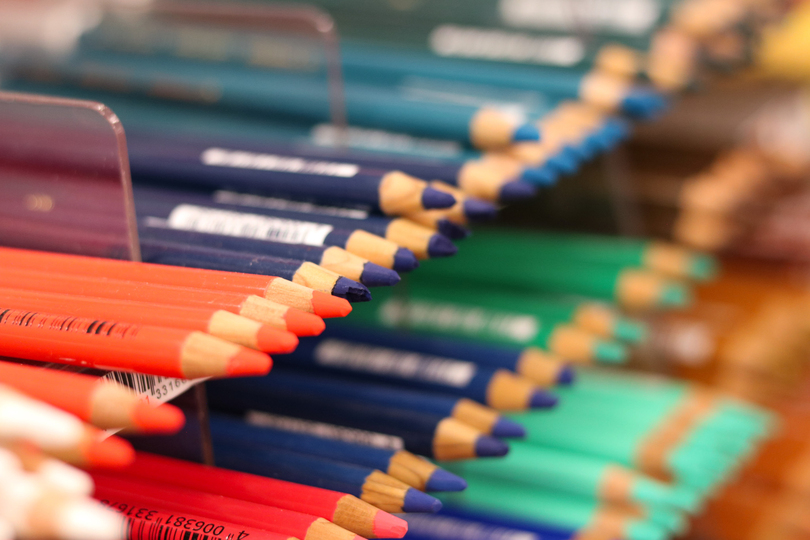New tariffs will spike back-to-school shopping, electronics costs

A finance expert says U.S. tariffs and inflation could make this back-to-school season the most expensive in recent memory. For college students, the biggest price spikes are expected to show up in electronics, sneakers and backpacks. Avery Magee | Asst. Photo Editor
Get the latest Syracuse news delivered right to your inbox.
Subscribe to our newsletter here.
As students prepare for a new semester, a finance expert said tariffs and inflation could make this back-to-school season the most expensive in recent memory.
During his first few months in office, President Donald Trump implemented a series of tariffs on multiple countries, raising the price for steel and aluminium goods, copper imports and foreign-made cars, imported engines and other car parts.
Patrick Penfield, professor of practice in supply chain management and director of executive education at Syracuse University’s Martin J. Whitman School of Management, said tariffs are already raising the cost of school essentials.
For college students, the biggest price spikes may show up in electronics, sneakers and backpacks. Waiting until September could leave students with fewer choices and higher prices, Penfield said.
Prices for common back-to-school products could climb 15 to 25% by Sept. 1 on top of existing inflation, he said. This increase could make this year expensive for students who need items such as laptops.
“Electronics are the big ones,” he said. “Most laptops are assembled in Asia, and that’s where students will feel the biggest hit.”
Trump claims tariff revenues could help pay down the nation’s $37 trillion debt and even fund a public “dividend.” Though data from the United States Department of the Treasury shows the money collected doesn’t cover the federal government’s monthly interest costs.
Interest costs on federal debt are the government’s third-biggest major spending area, following Social Security and health care services and research, according to the Pew Research Center. In 2024, the government’s net expense on interest was $879.9 billion, which was 13% of that year’s expenditures.
The Labor Department reported that wholesale inflation jumped 0.9% in July, the sharpest increase in more than three years. Analysts say importers have been absorbing much of the cost of tariffs so far, but that is likely to change.
“It will only be a matter of time before producers pass their higher tariff-related costs onto the backs of inflation-weary consumers,” Christopher Rupkey, chief economist at FWDBONDS, told the Associated Press.
Consumer prices are already rising. The U.S. Department of Labor reported a 2.7% increase in consumer prices in July compared to the same month last year.
Items heavily imported into the U.S., such as electronic equipment, saw noticeable gains, with wholesale prices for home electronics rising 5% in just one month, the AP reported.
The National Retail Federation reported that 67% of parents began their back-to-school shopping in early July, the highest figure since 2019. Educational books and supplies cost about
10% more this May compared to last year, according to the Consumer Price Index.
Economists warn that even if apparel prices have dipped slightly overall, expectations of higher prices are driving consumer behavior, ABC 10 reported.
Some retailers are starting to source products domestically, but supply chain shifts take time, Penfield said. In the meantime, students may have to adjust their shopping habits.
Penfield recommended considering last year’s models for electronics, browsing thrift stores or sticking with what students already own rather than upgrading.
Finance experts also urge students to avoid putting school expenses on high-interest credit cards, ABC 10 reported. Derek Stimel, associate teaching professor of economics at UC Davis, suggested using cash where possible, buying in bulk and comparing prices online before heading to stores.
While Penfield expects higher prices to last through the end of the year, the long-term picture is uncertain. If tariffs continue and consumers cut back, retailers could face slowing demand in 2026, potentially easing prices, he said.
“Costs are going to go up the next couple quarters,” Penfield said. “But if you shop early and look for deals, it doesn’t have to be that bad of a shock.”






